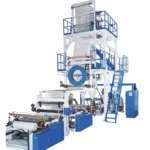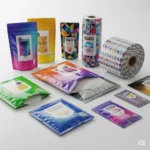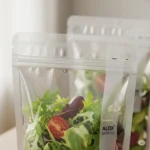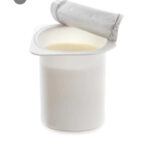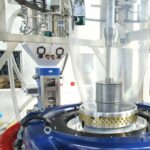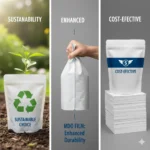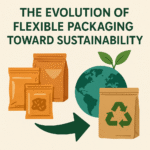Flexible packaging has become one of the fastest-growing sectors in the packaging industry. From food and beverages to pharmaceuticals, cosmetics, and industrial products, brands are increasingly shifting toward pouches, films, wraps, and bags because they are lightweight, customizable, and cost-efficient.
But while flexible packaging is appealing, one of the most common questions businesses ask is: “How much does it actually cost?”
The costing of flexible packaging is not a one-size-fits-all formula. It involves raw material prices, production processes, printing techniques, logistics, and even sustainability choices. Understanding these factors can help businesses negotiate better, optimize packaging budgets, and improve profitability.
In this article, we’ll break down the key elements that influence the cost of flexible packaging, explain hidden costs often overlooked, and share tips to reduce expenses without compromising quality.
Why Costing of Flexible Packaging Matters
For manufacturers and brand owners, packaging is not just a protective layer—it’s part of the customer experience. However, if costs aren’t controlled, packaging can eat into profit margins.
- Food companies need packaging that maintains freshness but also stays affordable for mass production.
- E-commerce brands require durable but lightweight packaging to save on shipping costs.
- Pharmaceutical businesses need compliance-grade materials, which often come at a premium.
Knowing how costs are calculated allows businesses to strike the perfect balance between performance, branding, and affordability.
Major Factors Affecting Flexible Packaging Cost
1. Raw Materials

The largest cost contributor is raw material. Flexible packaging typically uses plastics like:
- Polyethylene (PE) – widely used for films and bags.
- Polypropylene (PP) – common in pouches and laminations.
- Polyester (PET) – known for strength and clarity.
- Nylon (PA) – used in high-barrier applications.
- BOPP– known for strength, clarity, easy tear & softness.
- Aluminum Foil – provides excellent barrier properties.
Prices of these materials fluctuate depending on global oil prices, demand-supply cycles, and regional availability. For instance, an increase in crude oil prices directly impacts the cost of PE and PP.
Pro tip: Businesses sourcing large volumes can negotiate long-term supply contracts to stabilize raw material costs.
2. Film Thickness and Size
The thicker the film, the higher the material usage—and therefore, the higher the cost. Similarly, larger pouches or wider rolls require more raw material. Optimizing film thickness without compromising product protection can significantly reduce expenses.
3. Printing and Design
Printing is another major cost factor in flexible packaging. Options include:
- Flexographic printing – economical for large runs, lower setup cost.
- Rotogravure printing – offers premium quality but requires expensive cylinders.
- Digital printing – ideal for short runs, customization, and small batch production.
The number of colors, type of inks (water-based, solvent-based, UV), and finishing (matte, gloss, metallic) all affect pricing. Complex designs and high-resolution graphics naturally cost more.
4. Lamination and Coating
To enhance strength and barrier properties, films are laminated with multiple layers. For example:
- PET/PE structures for snack packaging, general packaging & frozen item.
- PET/Alu Foil/PE for pharmaceutical pouches, spices, dry fruits, powder.
- BOPP/CPP for dry food, Biscuit, packaging.
- PET/CPP for Namkeen, general purpose packaging.
Each additional layer adds material and processing cost. Similarly, coatings like anti-fog, UV resistance, or easy-peel seals increase the price but improve product functionality.
5. Production Scale
Economies of scale play a big role in costing. Large-volume orders reduce per-unit costs because setup charges, printing plates, and machine time are spread across more pieces. On the other hand, small-batch orders may seem expensive due to high fixed costs.
6. Customization and Special Features
Unique features like resealable zippers, spouts, handles, or tear notches increase consumer convenience but also add to production costs. Similarly, shaped pouches or die-cut windows involve additional tooling charges.
7. Labor and Overheads
The cost of labor, energy, maintenance, and equipment depreciation is factored into the final price. Regions with high electricity or labor costs naturally see higher packaging prices. Automation can reduce labor dependency and help maintain cost efficiency.
8. Logistics and Transportation
Because flexible packaging is lightweight and compact, it is cheaper to ship than rigid alternatives. However, shipping distance, fuel prices, and container availability still impact the landed cost. Businesses importing packaging material from overseas must also consider customs duties and taxes.
Hidden Costs Businesses Overlook
While most companies account for raw materials and printing, several hidden costs often go unnoticed:
- Wastage – film trimming, printing errors, or machine downtime lead to material loss.
- Design revisions – multiple changes in artwork increase pre-press charges.
- Storage – large rolls or finished pouches require warehousing space.
- Regulatory compliance – certifications for food contact or pharmaceutical use add testing and documentation expenses.
By identifying and managing these hidden costs, businesses can improve their cost efficiency.
How to Calculate the Cost of Flexible Packaging
Although every supplier has a different pricing model, a simplified costing formula looks like this:
Total Packaging Cost = (Material Cost + Conversion Cost + Printing Cost + Add-ons) ÷ Number of Units
For example:
- Raw material: 100 Rs. per kg
- Conversion (lamination, sealing, slitting): 35 Rs. per kg
- Printing: 25 Rs. per kg
- Add-ons (zipper, spout, coating): 8 Rs per kg
If 1 kg produces 100 pouches, the cost per pouch would be around 2 Rs.
This is a simplified example—actual costing varies depending on specifications, volume, and supplier pricing models.
Cost-Saving Strategies for Flexible Packaging
Businesses don’t always need to compromise on quality to reduce packaging costs. Here are some smart strategies:
Optimize Film Thickness
Using advanced material science, many brands reduce film gauge while maintaining strength. This lowers material usage without affecting product safety.
Simplify Printing
Limiting colors or avoiding complex metallic inks can cut printing expenses. Digital printing is a cost-effective option for small batches.
Consolidate Suppliers
Working with a single packaging partner for multiple SKUs often results in bulk discounts and reduced logistics costs.
Selection of lamination process Solvent less vs Solvent base
Basically, solvent less is cheapest as compared to solvent base, but solvent less is only applicable general-purpose application.
Order in Bulk
Larger orders reduce per-unit costs. However, businesses should balance bulk purchasing with storage capabilities.
Use Standard Sizes
Custom sizes require special tooling and machine adjustments. Sticking to standard pouch or roll sizes helps minimize setup costs.
Explore Sustainable Options
While recyclable or compostable films may seem more expensive upfront, they often reduce waste disposal costs and improve brand image—leading to long-term savings.
The Future of Flexible Packaging Costs
The global push toward sustainability is reshaping the cost structure of flexible packaging. Regulations are demanding recyclable or biodegradable materials, and suppliers are investing in new technologies. While these options may currently cost more, as adoption increases, prices are expected to become more competitive.
Additionally, advances in digital printing, automation, and smart packaging will influence how costs are calculated. Businesses that adapt early to these trends can gain a competitive advantage.
Final Thoughts
The costing of flexible packaging is a complex equation influenced by raw materials, production methods, design choices, and logistics. Businesses that understand these elements can make informed decisions, negotiate better with suppliers, and reduce unnecessary expenses.
At the end of the day, the right packaging is not just about price—it’s about delivering value. Whether you’re a food brand, an e-commerce seller, or a pharmaceutical company, investing in smart and cost-efficient packaging will strengthen both your product and your bottom line.
✅ Key Takeaway: To control the cost of flexible packaging, focus on optimizing material usage, simplifying designs, ordering in bulk, and staying updated with sustainable trends. The cheapest option is not always the best—cost efficiency comes from balancing performance, branding, and long-term value.

